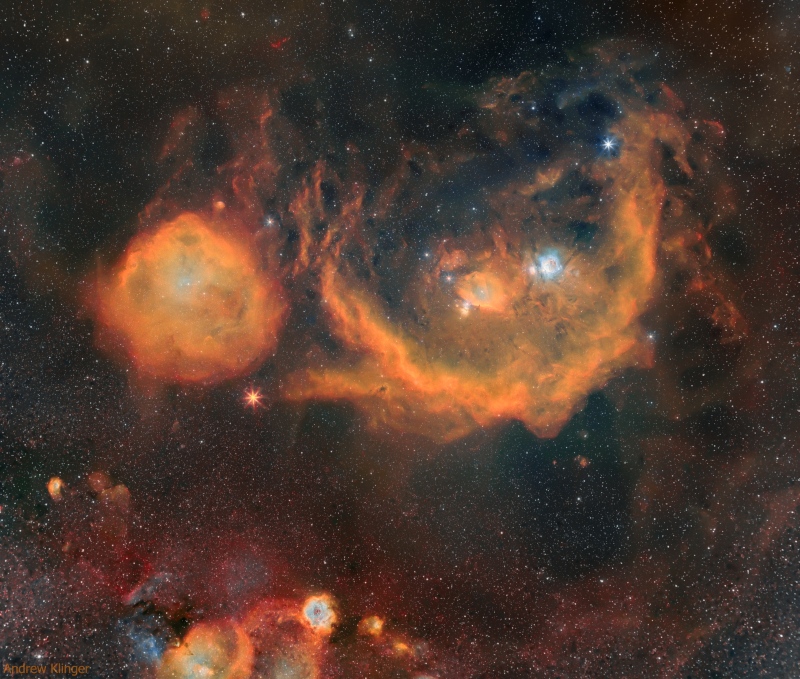
Photo by Andrew Klinger via Astronomy Picture of the Day
The first time I saw a picture of Barnard’s Loop (the arc running through Orion), I was astonished at the scale of it in the sky. I always had it in my head that (aside from the Milky Way, anyway), most of the astronomical features we see in photos are not just too faint but too small to see with the naked eye. The fact that I could instantly see the scale, because it wraps through a constellation I know, really drove home the fact that a lot of features don’t need telescopes, just long exposures. (And the right film/sensors and filters.)
